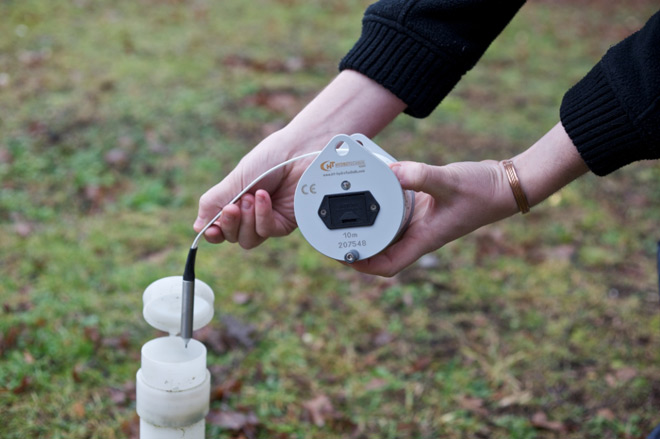




September 15, 2014
But on this occasion we need the help of all you professionals working out in the field. Please read on…
A question that has been keeping me awake at night: Is your manual dip correct?
This has come about In the light of higher accuracy water level sensors we have recently launched from Instrumentation North West (INW) – AquiStar® Smart Sensors. These vented sensors have a “typical” accuracy of 3mm making them one of the most accurate transducer now available for environmental research. They are particularly appropriate for measuring surface water fluctuations.
However, before deployment they require a manual dip to water to establish a reference point from which to analyse the data. Currently this is done with a water level dip meter but this is prone to a number of problems:
Contrary to absolute loggers (like Diver Level Loggers), INW sensors require a manual dip at the start of the deployment but using a poor manual dip will substantially increase the measurement inaccuracy.
So how do we get this datum? In my opinion it may be best to enter a “0” manual dip and insert the datum at a later point but of course we’d still be left with the value of the datum, but this could be obtained anytime in the deployment time sequence.
The question remains: How do we get the (accurate) datum? Can we work without it? (This may be the best route). I’d really like to hear your thoughts on this conundrum – post a reply below or email me on vi*****@*****lt.com.
Vincent van Walt
At Van Walt, we’re always striving to offer customers the best possible equipment for their projects. That’s why we’ve introduced Van Walt Premium Products - a selection of equipment that meet our...
Read MoreWe need to make clear, that at the time of writing, there are no ISO or EN standards which deal with the sampling of groundwater for PFAS.
Read MoreEnvironmental monitoring has developed considerably over the years. From the time when a consultant went out monthly or quarterly with a dip tape to monitor the groundwater level in a borehole, wind forward...
Read MoreA small selection of our environmental equipment